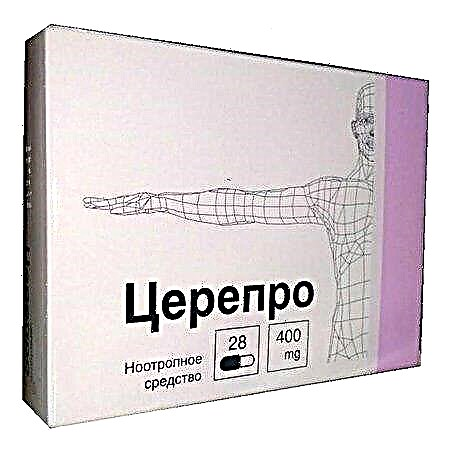Many people call the Mantoux test a vaccine, but it is not a vaccine. Vaccination is given in order to create immunity to pathogens of a particular disease. What, then, is the Mantoux test and what is it made from? The Mantoux test is done not to develop immunity to the causative agent of tuberculosis, Koch's bacillus, but to assess the presence of this immunity in a child. This test is known to everyone from childhood as a "button" and is completely harmless for the child, but very important in terms of diagnosis. For parents, the Mantoux test raises many questions, to which we will try to find answers.

What is the Mantoux test for?
We read: toHow to prepare your child for vaccination - rules, tips and tricks
As we have already said, the Mantoux test allows you to assess the presence or absence of immunity in a child to the causative agents of tuberculosis. Mainly the Mantoux test is used in order to identify among children:
- Primarily infected (those who first caught a tubercle bacillus);
- Infected for more than a year;
- Carriers of the tuberculosis bacillus (those who have tuberculosis pathogens in their bodies, but have no symptoms of the disease);
- Those who need revaccination against tuberculosis.
All this information is needed in order to confirm the diagnosis where it is, and to carry out prevention if the child is healthy.
Do I have to put Mantoux?
Refusal of vaccinations is now not at all uncommon, so parents are often interested in whether or not to put Mantoux. Mantoux tests are not made compulsorily, so no one can oblige to put a "button". If parents object to conducting a tuberculin test for their child, they write a refusal. However, WHO strongly recommends conducting Mantoux tests, especially in countries where tuberculosis is very common. Russia belongs to this category of countries, so it is better for Russian parents not to neglect this test.
Indications and contraindications
It is planned that the first Mantoux test is done in 1 year. It makes no sense to do this test before one year old, since the child's immune system is still being formed before one year old, and the results will not be reliable. Starting from 12 months, the Mantoux test is done every year, and it is advisable to do it every year at about the same time.
If there are no indications for more frequent testing, Mantoux is put on once a year for prevention. If the test gives positive results or someone close to the child is sick with tuberculosis, the "button" can be done 2-3 times a year.
In some cases, the Mantoux test must be postponed. Contraindications for her:
- Chronic and acute skin diseases;
- Any infectious diseases;
- Allergies of any nature;
- Epilepsy;
- Some somatic diseases (bronchial asthma, rheumatism).
Mantoux reaction mechanism
The Mantoux test in other words is called the tuberculin test. Tuberculin is a substance that is injected into the body in order to assess the degree of its "acquaintance" with Koch's bacillus. It is an “extract” of tuberculosis bacteria. That is, there are no living microorganisms in it.
With a special syringe, tuberculin is injected intradermally from the inside of the forearm. What happens after that in the body? Bacterial particles trapped under the skin begin to “attract” the cells of the immune system T-lymphocytes. However, not all T-lymphocytes react to tuberculin, but only those that have already dealt with the tubercle bacillus. This process is called the "Mantoux reaction". Due to the accumulation of lymphocytes under the skin in the place where the tuberculin was injected, a seal is formed - a papule, or that same “button”.
Button sizes
[sc: ads]
The most important thing when conducting a Mantoux test is to correctly measure the result. The injection site often turns red and inflamed, and there is swelling and induration. The test result in this case will only be the diameter of the seal, the size of the redness does not affect the result in any way and is an individual reaction.
The diameter of the papule is measured only with a rigid transparent ruler, and then these dimensions are compared with the norms:
- 0-1 mm - “negative reaction”;
- 2-4 mm - “dubious reaction” (the child is at risk);
- from 5 mm - "positive reaction" (high probability of illness, but one Mantoux test is not diagnosed, additional research is needed);
- from 17 mm - "hyperergic reaction" (a serious sign of the disease).
Sometimes the Mantoux test ends with a false negative or false positive reaction. In the first case, an infected child has a negative Mantoux reaction, in the second, on the contrary, a healthy child has a positive one. This happens with immunodeficiencies, oncological diseases, after hemodialysis, as well as if the test procedure itself was carried out with violations. Sometimes the reason lies in the tuberculin itself, which was incorrectly transported or stored.
By its nature, the Mantoux reaction can be attributed to one of the types of allergic reactions, therefore, the characteristics of the organism also affect the result. That is why the mantoux sample is evaluated over time, that is, in comparison with samples from previous years. An alarming sign is a change in the size of the papule by more than 6 mm.
Complications after Mantoux test
Usually, the Mantoux test is very easily tolerated by children. In rare cases, after it, side effects occur: lymph nodes may increase, the temperature may rise. Sometimes children complain of weakness and headache. All this happens quite rarely, but if the temperature rises after the Mantoux vaccination, you should not worry, you just need to give the child an antipyretic and monitor the condition.
Button care
"Buttons" are measured on the third day after tuberculin administration. This means that some rules must be followed for all 3 days. The "button" does not require any special care, but there are things that you should not do so as not to affect the result:
- no need to disinfect the injection site, smear it with green paint or peroxide;
- you can not seal the vaccination site with a plaster;
- do not once again touch the reddened area of the skin with your hands, rub or scratch it;
- contact of the vaccine with water should be avoided.
What happens if you get wet
Everyone knows the rule that Mantoux should not be wet for 3 days. At the same time, the parents have a reasonable question: how many days cannot the vaccine be wetted? You can't deprive a child of water procedures for all 3 days - it's not hygienic. - It is desirable that the injection site does not fall under water for the first 48 hours, but if you wet the Mantoux vaccine, you just need to dry it with a towel and inform the doctor about it when measuring. You can give your child something antiallergic (Claritin, Zertek).
“You can swim, take a shower with a Mantoux test. You can not swim in open water, so as not to infect the wound. You cannot rub this place with a washcloth, as well as use any liquids and solutions - brilliant green, iodine, peroxide. Do not cover the wound with a plaster. It is necessary to ensure that the child does not scratch the wound. All this can affect the test result. Don't worry about your mistake. "
Restrictions in food and in everyday life
Even if the child does not have food allergies, it is better not to eat anything potentially allergenic during the Mantoux test. What you can't eat after Mantoux vaccination:
- citrus fruits;
- chocolate;
- red fruits and vegetables;
It is necessary to exclude allergens not only in food, but also in everyday life. In particular, reduce the "communication" with pets, make sure that the vaccine does not touch synthetic fabrics.
Should you be afraid of Mantoux's positive reaction?
If the Mantoux reaction is positive, this does not mean at all that the child has tuberculosis. There may be several reasons for a positive reaction, and not all of them are related to infection. So, the reasons for the increase in Mantoux can be as follows:
- the rules of behavior after the injection are not followed (allergies or severe irritation may appear instead of a real reaction);
- poor quality tuberculin was introduced (in this case, it is better to retest in an independent laboratory);
- the nurse measured the papule incorrectly;
- the characteristics of the organism are such that the test shows a positive result (sometimes the hereditary factor plays a role, sometimes the peculiarities of the diet, in particular, an excess of protein foods);
- there was a recent (within two years) BCG vaccination (the so-called post-vaccination immunity, while the papule has vague contours, and a pigment spot remains in its place).
If all these factors are excluded, and the reaction is positive, you need to go for further examinations. Based on the Mantoux test, a diagnosis cannot be made, so the child will need to do fluorography and donate sputum for microbiological culture. Be sure to examine other family members at the same time.
Vaccinations before and after Mantoux
The Mantoux test is not in the vaccination calendar, and since it is not tied to any dates, it must be set so that other vaccinations do not affect the result.
- If vaccinations are planned before Mantoux, then vaccination with live vaccines should be carried out 6 weeks before the test, inactivated - 4 weeks before the Mantoux test.
- On the same day with the Mantoux test, no vaccinations can be given.
- 3 days after the test, when the result is measured, you can give any vaccinations.
Thus, the main restrictions apply to vaccinations before the test, and what kind of vaccination is given after Mantoux does not really matter.
The Mantoux test is really important for the prevention of tuberculosis, and for the child's body it is completely harmless. Knowing what the meaning of this test is and how to do it correctly, parents can really contribute to the detection of tuberculosis at an early stage and protect their child from the disease.
- Vaccination calendar for children under 1 year old (in Russia). What moms need to know
- Vaccination against measles, rubella, mumps
Mantoux test - School of Doctor Komarovsky
[sc: ads]



